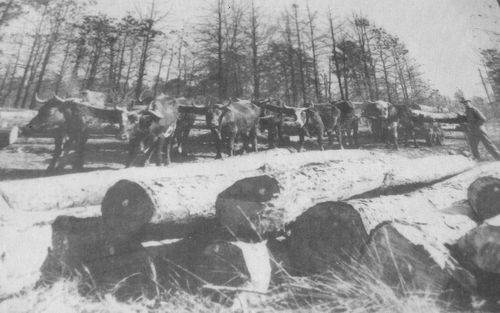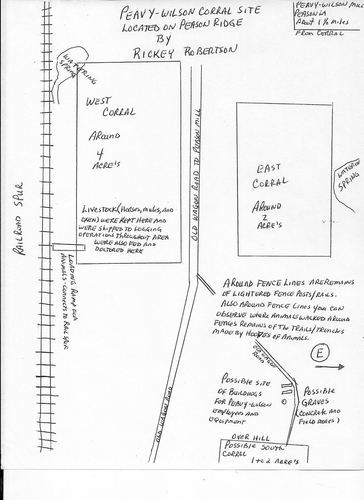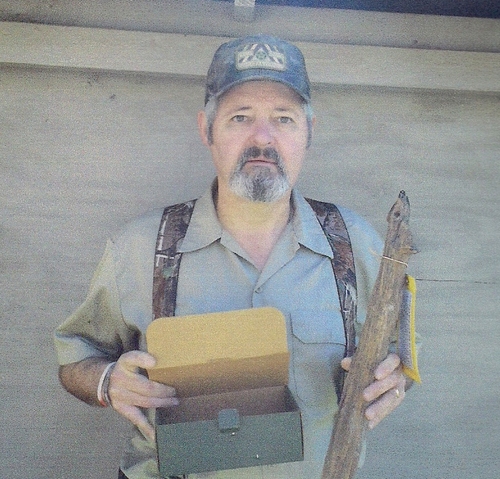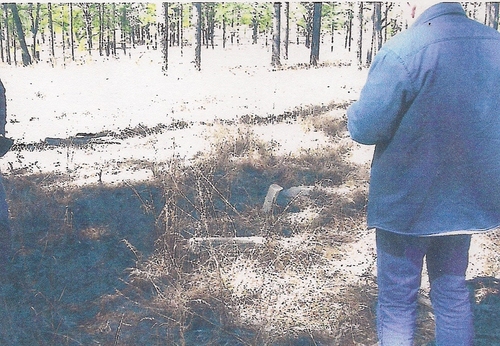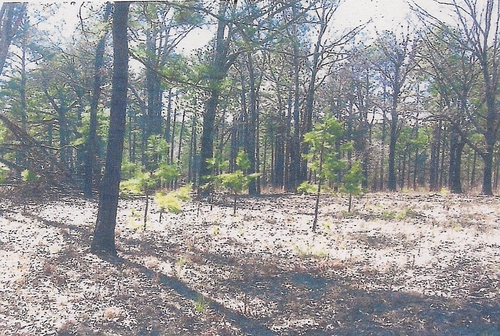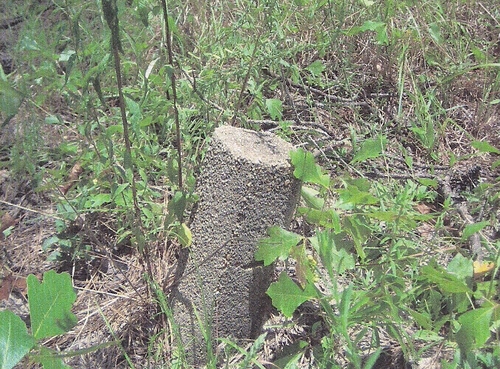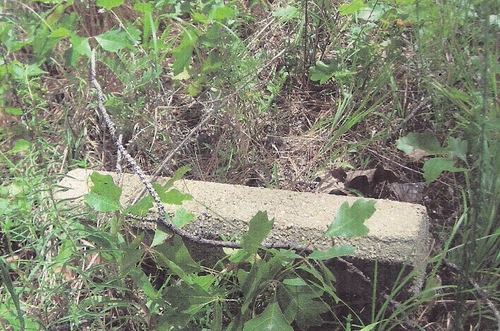.JPG)
By Rickey Robertson
In December 1916 A.J. (Andrew Jackson) Peavy, a young logger from east Texas, began his career as a lumberman in Louisiana by purchasing 45,000 acres of land in the southeast section of Sabine Parish, La. Mr. Peavy did not have any experience as a lumberman and partnered up with R.J. Wilson, who was very experienced as a mill manger. When these two men partnered they also purchased several thousand more acres of land, this being in northern Vernon Parish, La.
The two partners began building their sawmill and sawmill town in March 1917 and named the new town PEASON, a combination of the two surnames of the men. Lumbering and logging operations were began in 1918 by the Peavy-Wilson Company owned by the company.
As the logging operations began, my grandfather, Ora A. Robertson, returned from his service in the US Army in World War I. My grandfather had experience with horses, mules, oxen, and all the leather and metal harnesses and equipment since his father, Robert Lee Robertson, had been a blacksmith. My grandfather could train horse, mule, and ox teams for logging. He had a good ox team and hired out to Peavy-Wilson company to both haul and skid logs. In some of the old Peason records, I have documentation where Peavy-Wilson Company bought a brand new factory built log wagon in 1922 for use by my Grandfather Robertson. On my grandfather's team he had a young boy, Grover Owers, who rode the "offwheeler" mule or oxen. Grover would help rein the team as a turn was being made. Even though there were many spur log railroad tracks and re-haul skidders to bring logs to the mill, there were many situations where my grandfather could go into an area and would skid out logs to a set near the railroad where they could be loaded. As the logging operation got bigger, the Peavy-Wilson Company need a corral site away from the mill site itself to house, feed, and doctor the livestock needed in its daily field logging operations. This site is now located on present day Peason Ridge Military Reservation.
In its heyday, the corral site was of vast importance to the company. Even with modern logging equipment, animals such as horses, mules, and oxen were still needed. Peavy-Wilson Company had a very large number of these animals, with even other animals being kept for use at the main mill-site in a separate corral in Peason.
As a youngster I grew up with knowledge of this corral site and went to its location literally hundreds of times with my father, Bud Robertson. My father and grandfather ran cattle for several decades on Peason Ridge (until 1995 when JRTC advised all cattle must be removed) and we were in and out of this location regularly as this was part of the grazing lands where our cattle fed. In the early 1960's my grandfather's health became very bad and my father bought all of his father's cattle. Over the years my father grazed at times 500 to 600 head of cattle on the open range lands. On many occasions we would sit and watch the cattle grazing and my father would tell me of the importance of the corral site, because it allowed the lumber company to have instant access to the much needed logging livestock. My Dad walked with me many times around the corral site and showed me the dimensions of the pens and corrals, locations of the 2 springs used for watering, the railroad spur, the loading ramp at the rail spur for the livestock to be loaded onto rail cars, and the site where the workers lived and camped.
In a description of the site it is about one and a half miles south/southwest of the main mill site in Peason. The site could be reached by traveling on the rail spur, or by the wagon road that came to the site. And the site is in Ward I of Sabine Parish, La. At the corral site the "west corral" was the largest of the pens. This corral was about 4 acres in size. In the northwest corner of this corral was a large running spring that provided an abundance of water for the stock. At the southwest corner of this corral was a large gate (remains of the corner posts and fence posts still there) and a road/trail that led to a loading ramp at the railroad spur, which was about 50 yards west of the "west corral pen". At the loading ramp, it was built where the livestock could be loaded onto rail cars, with it being built up and the same height of the door of the rail cars. As with most livestock, these animals continuously walked around the fences of the corral. All the way around this 4 acre site you can still see the worn down trail inside the old fence lines that the hooves of the stock wore down over the years. For shade there are large oak trees in the "west corral". As you look at the pen site you can see it had good drainage to prevent flooding and excessive mud. "See diagram of site"
Just across the wagon road is what we called the "east corral". This corral was about 2 acres in size. There are also shade trees inside this pen and the walk line can also be seen where the livestock walked the inside of the fence located there. On the east side of the "east corral" is another large flowing spring that provided water for the animals housed there. Again, there are the remains of old fence posts around this site. This corral is also well drained . It may be possible that this smaller pen was used to house oxen, who would not associate with the horses and mules, and would fight and injure them (see diagram).
South/southwest of the corral site about 100 yards is the location where the men who worked at the corral site lived. This site is on a small sand hill that provided good drainage. Also located at the site where the workers lived (most of the corral workers were African-American. One of the bosses was Coburn Sanders who lived on Peason Ridge) are 2 concrete markers and a large sandstone rock all in a row. These concrete markers are not section or survey markers(they have no brass tag on them), they have no numbers or initials inscribed on them, and were never used as artillery fire point markers (over the years we never saw a military unit camped near the corral site since it is located in the Impact Area). As you look at these markers and rock, these 3 items may be the grave stones and markers for the graves of African-American workers who were not allowed to be buried in organized cemeteries in the area. And sadly, most of these workers and those in the turpentine camps are not listed on any census records, since they were not living in the town of Peason or area towns or communities. As you get to the top of this small sand hill, you can look further south and my Dad always advised that he thought my grandfather Robertson had told him that there was another smaller corral located there where sick or lame livestock were kept (see diagram). He advised that my Grandfather Robertson, though not a veterinarian , would on occasion be asked to come and "doctor" a sick animal. My grandfather had his own set of old veterinarian needles and tools, and I still have these items that he and my father used over the many years. Granddaddy Robertson also hand made some of the leather gear used on the animals, and made many ox yokes for these teams from boat ark wood.
At this corral location, the complete area including the possible small corral site would be 15 to 20 acres in size and ran between the 2 large springs. According to what I have been told, at the corral site there would at times be 200 to 300 horse, mules, and some oxen. Livestock that were injured and were not able to work in the logging operations were often "turned out" to live and graze freely around the corral area. When the mill shut down in 1935 and the corral site was closed, 2 good log mules were turned out that year to run free with the large number of animals already free. These 2 mules lived for many many years on Peason Ridge with the wild horse herd. My Dad told me in 1978 that the mules, still running free on Peason Range, were 45 years old. In the next couple of years both mules eventually died, with them being nearly 50 years old at their time of death.
In 2010 I was able to carry several folks from Ft. Polk to this site. According to these men who have conducted much historical investigation and documentation, they have never seen or heard of a historical site such as this and they were able to see firsthand the site and hear the stories I have of the site. And as we were departing the site, about 15 wild horses came grazing up, just like they were coming to visit the site where their ancestors once lived. And who knows... their blood lines may lead right back to the animals who were housed in these corrals over 90 years ago!
